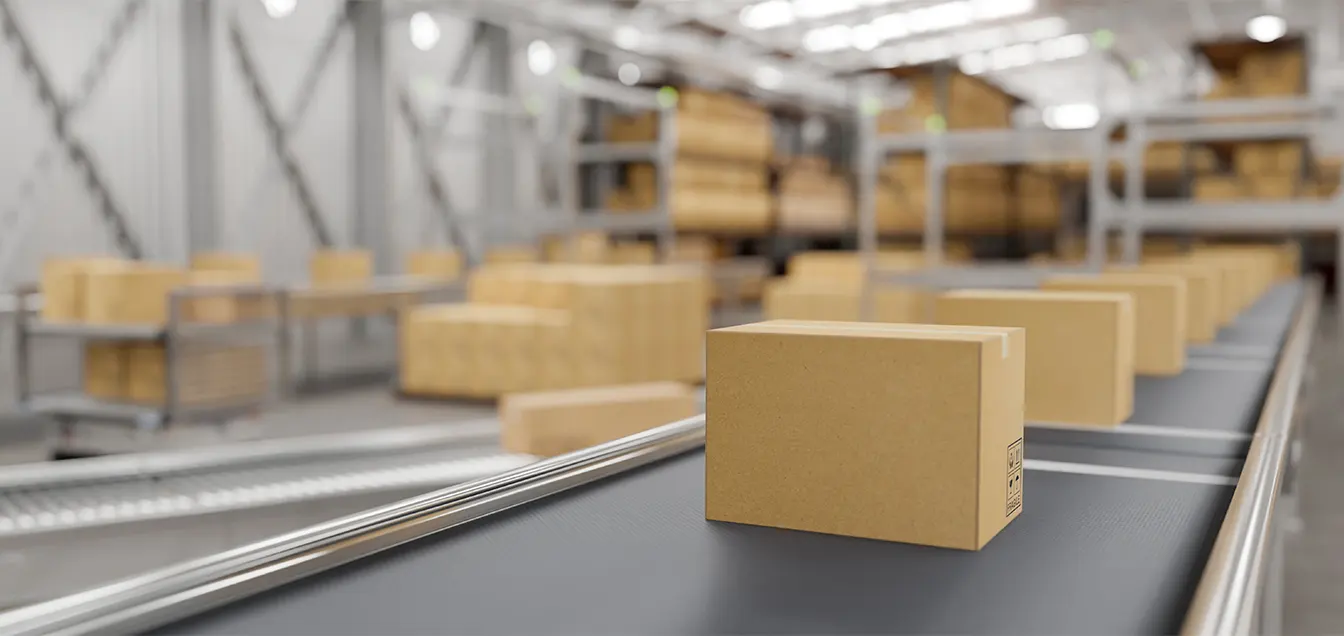Successfully selling on Amazon requires a deep understanding of shipping and fulfillment options. How to ship to Amazon FBM Canada is a critical topic for sellers looking to maximize their efficiency and reach. This blog post will guide you through the essential steps to ship to Amazon FBM Canada while highlighting the advantages of utilizing Fulfilled by Merchant (FBM) versus Amazon FBA (Fulfillment by Amazon).
Table of Contents
Understanding Amazon FBM in Canada
Amazon FBM Canada (Fulfilled by Merchant) is a model where sellers take responsibility for storing, packing, and shipping their products directly to customers. This approach offers more control over inventory and costs, making it an attractive option for businesses looking to manage their operations independently.
In contrast, Amazon FBA Canada shifts the logistical burden to Amazon, where your merchandise is stored in their fulfillment centers, allowing for faster deliveries and access to Amazon’s robust customer service network. Each model has unique benefits, and understanding how to ship to Amazon FBM Canada is crucial to deciding which fulfillment strategy aligns with your goals.
How to Start Amazon FBM Canada

Starting your journey with Amazon FBM Canada is straightforward. Follow these essential steps to set up your business effectively:
1. Create Your Amazon Seller Account
Sign up on Amazon Seller Central. Choose between an Individual or Professional account based on your expected sales volume.
2. Conduct Market Research
Identify profitable niches using tools like Jungle Scout. Analyze competition, pricing, and reviews to determine what products to sell.
3. Source Your Products
Find reliable suppliers on platforms like Alibaba. Always order samples to ensure quality before placing larger orders.
4. Set Up Your FBA Account
Link your seller account to FBA in the Seller Central dashboard. Create FBA listings for your products to utilize Amazon’s logistics.
5. Prepare and Ship Your Products
Adhere to Amazon’s prep guidelines for packaging and labeling. Create shipment plans in your FBA dashboard and ship your products to Amazon’s fulfillment centers.
6. Optimize Listings and Monitor Performance
Enhance your product listings with compelling titles, descriptions, and images. Keep track of sales metrics and customer feedback to make necessary adjustments.
By following these steps, you can effectively launch your Amazon FBA business in Canada and tap into a vast customer base. Good luck!
Benefits of Amazon FBM
Choosing Amazon FBM (Fulfilled by Merchant) offers several advantages:
Control Over Operations: Sellers have complete control over their inventory, packaging, and shipping, allowing for customization and flexibility.
Cost Savings: For low-volume or niche products, FBM can be more cost-effective as you avoid Amazon’s FBA fees.
Direct Customer Interaction: FBM allows sellers to directly interact with customers, providing opportunities to build stronger relationships and handle inquiries personally.
However, FBM also has its challenges, such as the responsibility for handling returns and ensuring timely delivery. It’s crucial to weigh the pros and cons of Amazon FBM before deciding.
For sellers looking to enhance their fulfillment process, Amazon Canada fulfillment services can be a valuable resource. These services help manage storage, packaging, and delivery, ensuring a smoother operation while meeting customer expectations.
Amazon FBM vs. FBA
When deciding between FBA and FBM, it’s essential to weigh the advantages and disadvantages of both methods.
Advantages of Fulfilled by Merchant (FBM)

- Control Over Inventory: With FBM, you have full control of your stock, allowing you to respond faster to market changes and adjust pricing as necessary.
- Cost Savings: For smaller sellers, FBM can be more cost-effective since you avoid Amazon’s storage and fulfillment fees.
- Customization: Sellers can choose their preferred shipping carriers and delivery methods, offering varied shipping options that may appeal to customers.
Understanding how to ship to Amazon FBM Canada while weighing the pros and cons of FBA and FBM can help you decide which route is best for your business model.
How to Ship to Amazon FBM Canada
When you choose to ship products, knowing how to ship to Amazon FBM Canada is vital. If you choose to manage your shipping through FBM, here’s how to do it efficiently:
Step 1: Setting Up Your Amazon Seller Account
To begin selling on Amazon, you need to set up an Amazon Seller account, ensuring you select the FBM option during registration. This account will be integral to managing your sales, inventory, and customer relations.
Step 2: Create Product Listings
When you create listings for your products, clearly indicate that you will fulfill orders directly. Ensure each product description includes essential information like dimensions, weight, and shipping terms to set realistic expectations for buyers.
Step 3: Inventory Management
Efficient inventory management is crucial for how to ship to Amazon FBM Canada. Regularly monitor stock levels to avoid overselling. Utilize software or tools that help automate inventory updates and alerts when stock runs low. This will ensure you are always prepared to fulfill orders.
Step 4: Order Processing
Once you receive an order, promptly process it. Proper order processing involves picking, packing, and shipping items on time. Invest in quality packing materials to protect your products during shipping, which helps maintain customer satisfaction.
Step 5: Shipping the Product
For shipping, choose reliable carriers that meet your budget and service expectations. Calculating shipping costs ahead of time will help ensure you maintain profitability. Tools like the Amazon Shipping Calculator can assist in determining these costs.
Step 6: Customer Service
Good customer service is essential in any fulfillment method. With FBM, you’re responsible for responding to customer inquiries and handling issues. A swift response can enhance your seller metrics and establish trust with your customers.
Step 7: Performance Analytics
To optimize your business operations, regularly review performance metrics related to order fulfillment. Amazon Seller Central offers insights into delivery times, order defect rates, and customer feedback, which can inform areas for improvement.
Streamlining Operations: Consider Third-Party Logistics (3PL)
As your business scales, considering third-party logistics (3PL) in Canada can help alleviate some of the orders from your plate. 3PL providers can store your inventory and manage your shipping, allowing you to maintain focus on other aspects of your business. Understanding how to ship to Amazon FBM Canada can also include employing 3PL as part of your shipping strategy.
Transitioning from FBM to Amazon FBA Canada
If you find FBM limiting as your business grows, you might consider transitioning to Amazon FBA Canada. Be aware of the requirements, including appropriate labeling and packaging for products going into Amazon warehouses. This shift allows you to combine the benefits of FBM, such as direct control, with the advantages of FBA, including fast shipping and increased visibility.
Fees to Consider for Amazon FBA Canada
Understanding the fees associated with Amazon FBA Canada is critical. FBA involves multiple fees, including:
- Fulfillment Fees: Charged for picking, packing, and shipping your items.
- Storage Fees: Charged based on the space your products occupy in Amazon’s warehouse.
- Optional Services: Include additional fees for returns processing and removals.
It is essential to factor in these costs when setting your product prices to ensure your profit margins remain healthy.
Mastering Amazon Selling in Canada
Selling on Amazon in Canada can be lucrative. Mastering how to ship to Amazon FBM Canada ensures you’re setting your business on the right path. By combining effective shipping strategies with stellar product offerings, you can stand out in a competitive marketplace.
Insights on Amazon Selling in Canada
It’s crucial to gather insights on Amazon selling in Canada. According to a recent market analysis, Amazon captured approximately 38% of Canada’s e-commerce market share in 2021, highlighting its significance. Being aware of the competition in your niche and the demands of Canadian consumers can help you strategize better.
Amazon selling and e-commerce trends in Canada
This information will help provide useful insights for readers interested in using Amazon FBM or FBA for their businesses.
| Data Point | Details | Source |
| E-commerce Market Share | Amazon captures approximately 38% of Canada’s e-commerce market share. | Retail Council of Canada, 2021 |
| Amazon Seller Growth | Over 50% of sellers on Amazon use the Fulfilled by Amazon (FBA) program. | Statista, 2022 |
| FBA Fees | FBA fees can range from 15% to over 30%, depending on product size and category. | Amazon Seller Central |
| FBM Seller Growth | As of 2022, around 30% of sellers prefer FBM to maintain control over inventory and shipping. | eCommerce Canada, 2022 |
| Average Shipping Costs in Canada | The average cost of shipping a standard package within Canada is approximately CAD 10-CAD 20. | Canada Post, 2023 |
| Consumer Preference for Fast Shipping | 78% of Canadian consumers expect their online orders to arrive within two days. | Canadian Internet Registration Authority (CIRA), 2022 |
| Market Size of E-commerce in Canada | The Canadian e-commerce market was valued at approximately CAD 71 billion in 2021. | Statistics Canada, 2021 |
| Growth Rate of E-commerce in Canada | The e-commerce sector in Canada is expected to grow by 11% annually from 2022 to 2025. | IBISWorld, 2022 |
| Amazon Prime Customers | Amazon has over 2 million Prime members in Canada as of 2022, which boosts visibility for FBA sellers. | Amazon, Annual Report, 2022 |
| Return Rates for Online Orders | The average return rate for e-commerce in Canada is around 30%, posing a challenge for sellers. | Canada Post, 2022 |
This table encapsulates key statistics and trends in the Canadian e-commerce landscape, equipping readers with actionable insights. It can also serve as a valuable reference point to help them make informed decisions about their fulfillment options—whether opting for FBM or FBA on Amazon Canada.
Amazon FBM Canada Requirements, Fees, and Insights

When starting with Amazon FBM Canada, it’s essential to understand the requirements for shipping and inventory management. Adhering to Amazon’s guidelines ensures that your products are properly prepared for fulfillment and delivery. Additionally, considering the Amazon FBM fees, which include fulfillment, storage, and optional service charges, is crucial for maintaining healthy profit margins.
For those exploring hybrid fulfillment models, knowing how to ship to Amazon FBM Canada can also be beneficial. This knowledge allows sellers to take advantage of both FBM and FBA strategies to maximize efficiency and profitability. By leveraging insights specific to the Canadian marketplace, sellers can optimize their operations, from selecting the right product categories to analyzing customer preferences in Canada. These insights can guide decision-making, ensuring a competitive edge in the marketplace.
Conclusion
In conclusion, both Amazon FBM and FBA offer unique advantages and challenges. When considering how to ship to Amazon FBM Canada, think through your business needs and choose a method that aligns with your operational capabilities. While FBM demands more hands-on management, it can be a profitable choice if handled correctly.
If you’re still pondering, is Amazon FBM Canada worth it? We suggest assessing your market, experimenting with FBM, and gradually learning about the successful aspects of FBA. With the right approach, you can build a successful presence on Amazon, leading to sustainable growth and increased profit margins.
External Reference
To learn more about shipping strategies and logistics management, you can visit the Council of Supply Chain Management Professionals for additional resources and insights.
By thoroughly evaluating your options and understanding the logistics landscape, you can propel your e-commerce journey to greater success. Embracing the methods that align with your business model will pave the way for a thriving Amazon selling experience in Canada.





